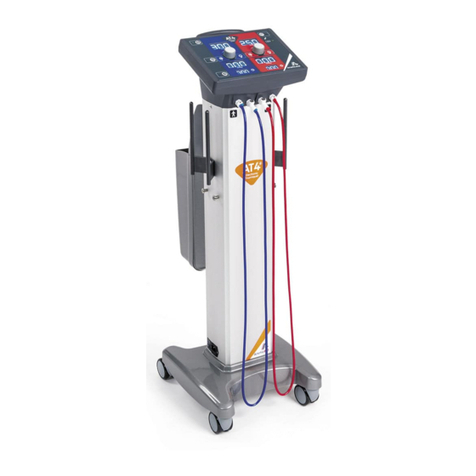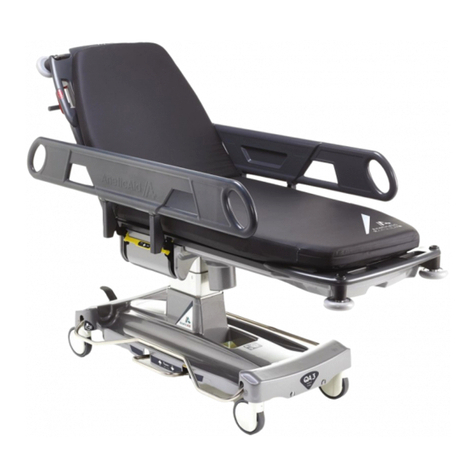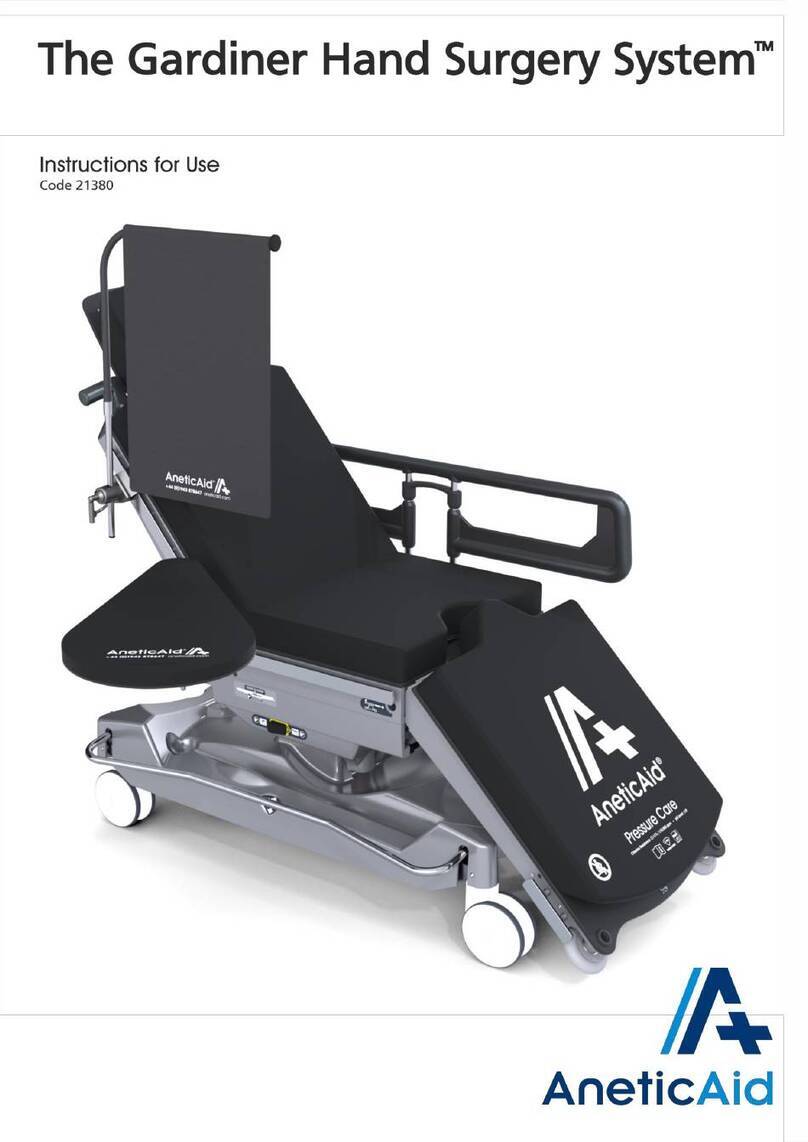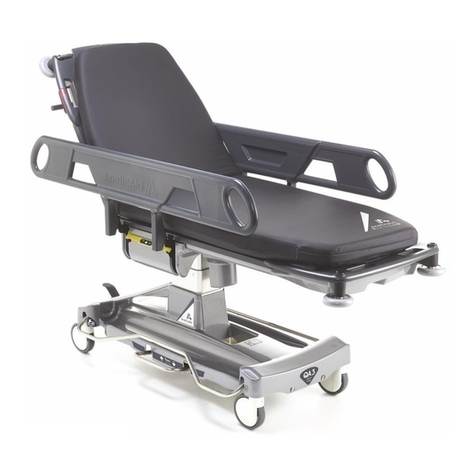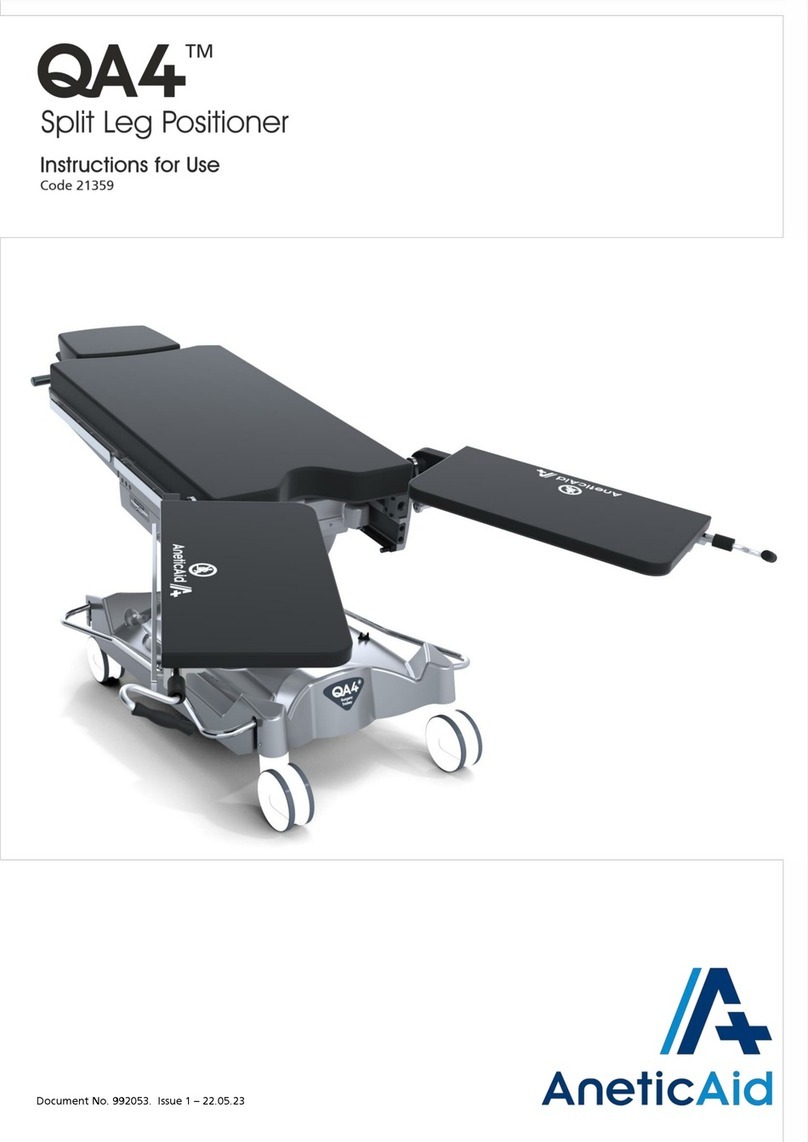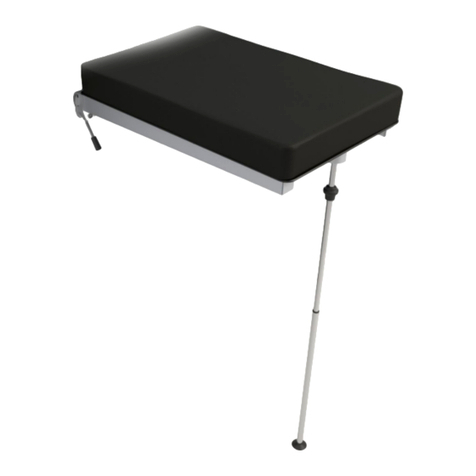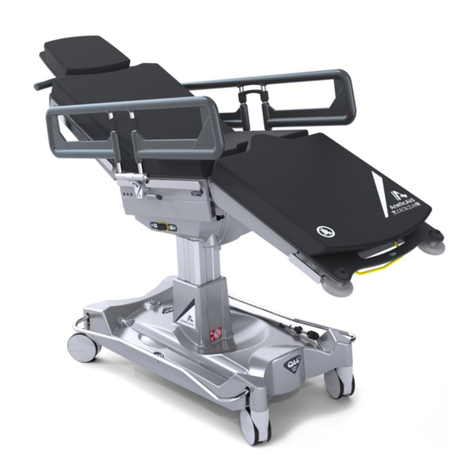
Introduction
Document No. 992012. Issue 16 –12.01.21
Page 2
1.5. Putting the Trolley into Service
Care should be taken when removing packaging, avoid the use of sharp implements
wherever possible.
It is important that the trolley is working properly, fully charged (if applicable to the
model, see Section 22. Battery Charge Level Indication, Battery Charging &
Maintenance), cleaned and disinfected before it is put into service. Use this manual to
check all the functions and refer to section 38. Cleaning and Disinfecting the Trolley.
The trolley should only be used, for its intended use, by suitably trained personnel who
have familiarised themselves with the functions of the trolley. Our representatives are
available for on-site consultation or training and our head office team will be pleased
to answer any queries you may have.
1.6. Abridged Summary of Warnings and Cautions
In common with all medical devices of this nature there are inherent risks that the user
should be made aware of, including potential pinch points from moving parts. Whilst
every effort has been taken to eliminate these risks, care should be taken when using
the trolley. It is important that the user familiarise themselves with all of the warnings
and cautions contained within this document.
If the trolley is damaged or faulty it must be taken out of use with immediate effect
and the fault reported to Anetic Aid, your authorised dealer or maintenance
department. The trolley must not be used until the damage or fault has been
repaired.
When leaving patients unattended the trolley should be fully lowered to minimise
any risk of injury should the patient fall off the trolley.
Always apply the brakes when a patient is getting on or off the trolley, or when
transferring patients from the trolley to another platform.
It is important to ensure that nothing impedes the side rail release lever from locking
correctly; ensure that the release lever remains visible at all times.
After raising the side rail, it is important to ensure that it has locked in position by
pushing down on the side rail; failure to ensure the side rail is properly locked could
result in injury to the patient.
If the side rail mounted IV pole is in use when either raising or lowering the side rail
it is important to check the infusion flow rate as the height of the infusion above the
patient will change by approximately 300mm (11.8”).
When the backrest is raised, the fold-away pushing handles can come in close
proximity to the patient’s head and care should be taken.
Syringe drivers (and similar devices) can be mounted to the IV pole if extreme care is
taken when lowering or lifting the side rail with additional weight attached.
When folding the transfusion pole away ensure that it is fully retracted and returned
to its storage position within the side rail; failure to do this may cause the pole to get
caught on obstructions when pushing the trolley.
Using the transfusion pole to either push or pull the trolley may cause permanent
damage to the transfusion pole and the side rail.
Do not raise the backrest with the x-ray tray, x-ray cassette or digital plate across the
backrest hinge as damage may occur.
Do not use a trolley bed push, or other mechanical means for propulsion of the
trolley, on a trolley fitted with DRIVE assist.
The maximum slope angle for DRIVE assist is 6°; exceeding this angle could result in
damage to the trolley or the fabric of the building.
Ensure the mains charging lead is disconnected before attempting to move the
trolley; failure to do so could result in damage to the trolley or the fabric of the
building.
Do not stow the fold-away handles when driving, or whilst DRIVE assist is active.
Ensure the brakes are engaged before stowing the fold-away handles.
